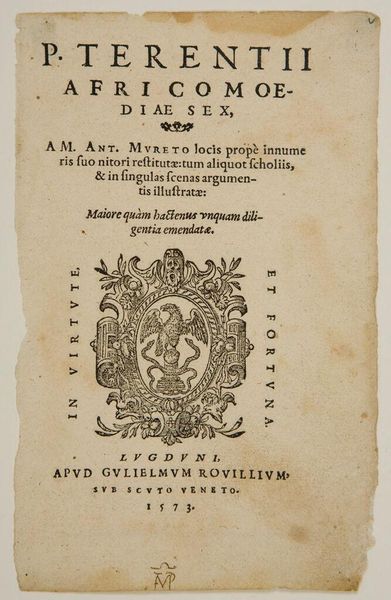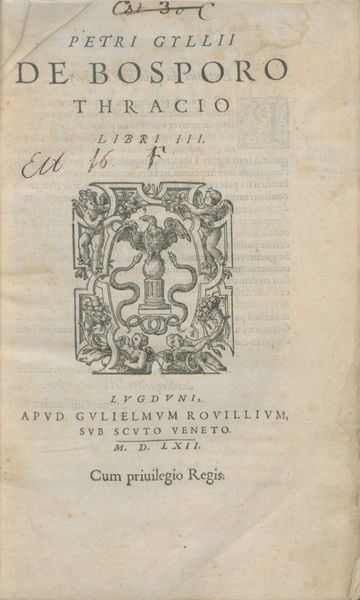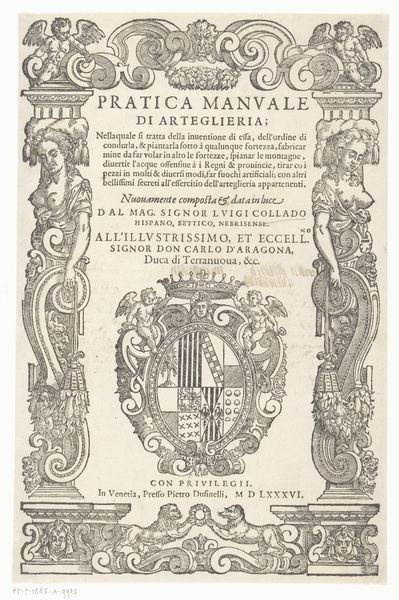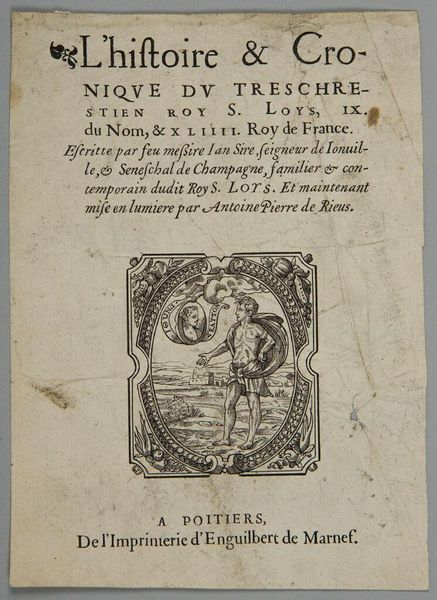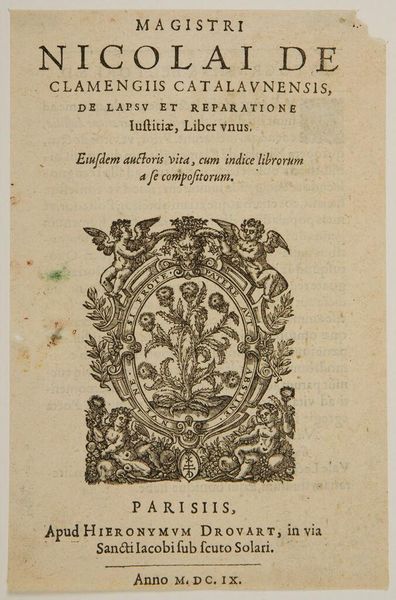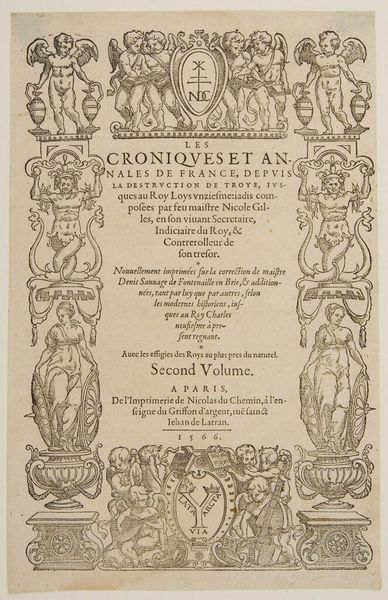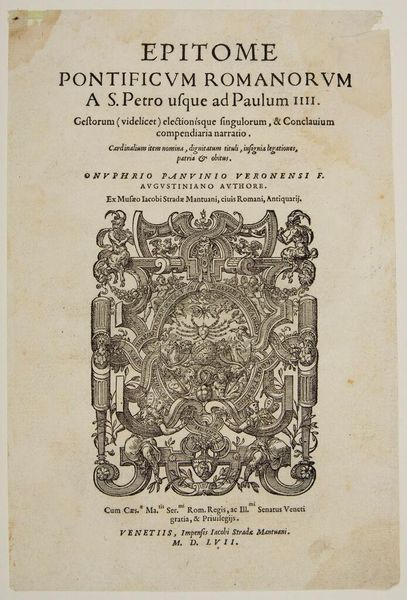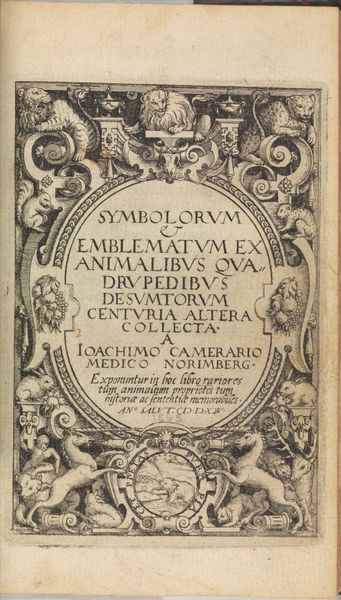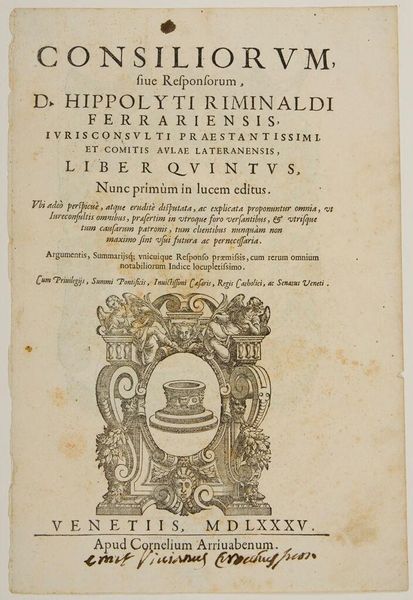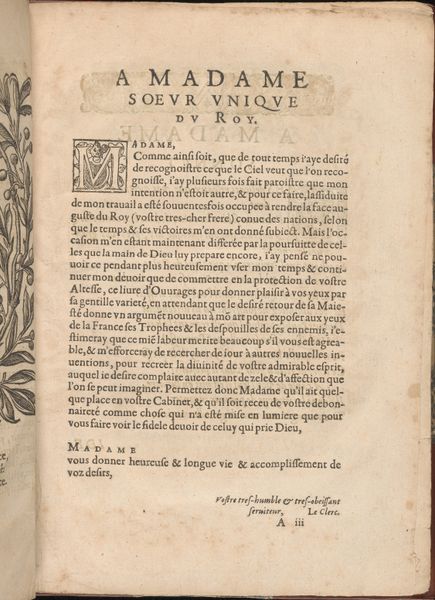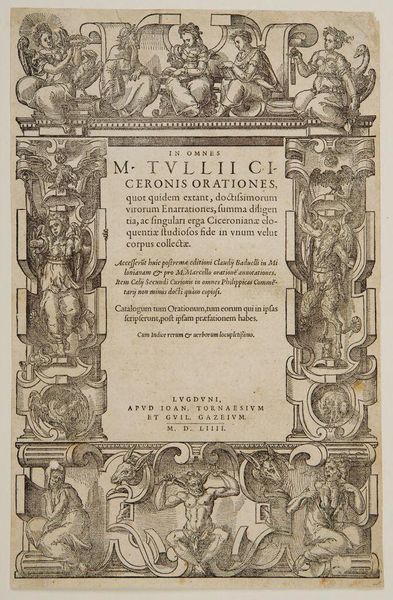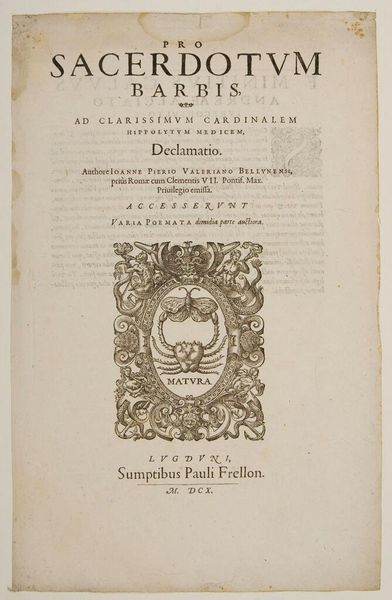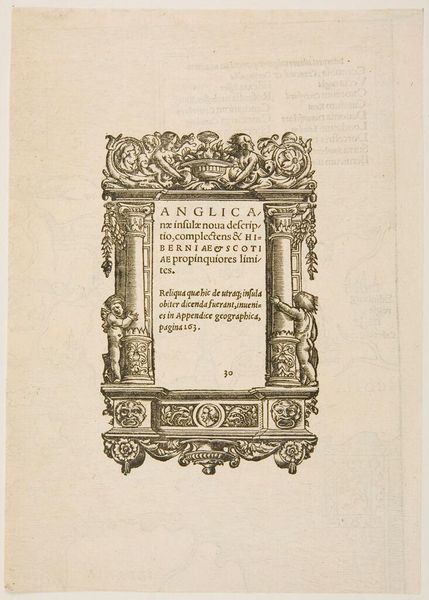
Illustration from Hippolytus Riminaldus, Consiliorum sive Responsorum . . . liber sextus. Damian Zenarus 1588
0:00
0:00
Copyright: CC0 1.0
Editor: This is an illustration from "Hippolytus Riminaldus, Consiliorum sive Responsorum... liber sextus" by Damian Zenarus, though it's attributed to an anonymous artist and dates back to the late 16th century. The swirling dragons and classical figures give it a somewhat chaotic feel. What do you see in this piece? Curator: The chaos you perceive speaks volumes about the anxieties of the time. Consider the Counter-Reformation, the power struggles, and the pervasive fear of the "other." This isn't just decoration; it's a visual representation of the ideological battles being fought. The serpent, often associated with temptation and heresy, is caged, perhaps symbolizing the Church's attempt to contain dissenting voices. What does the phrase ‘Virtuti Sic Cedit Invidia’ imply to you? Editor: Maybe that virtue overcomes envy? So, it's a statement on societal values? Curator: Exactly. The image becomes a powerful assertion of orthodox values prevailing over societal corruption and challenges to established power. We need to ask, though, whose virtue, and whose envy? Editor: I hadn't considered it in such a political context. Curator: It's a reminder that even seemingly decorative elements can be deeply embedded in the social fabric of their time.
Comments
No comments
Be the first to comment and join the conversation on the ultimate creative platform.
